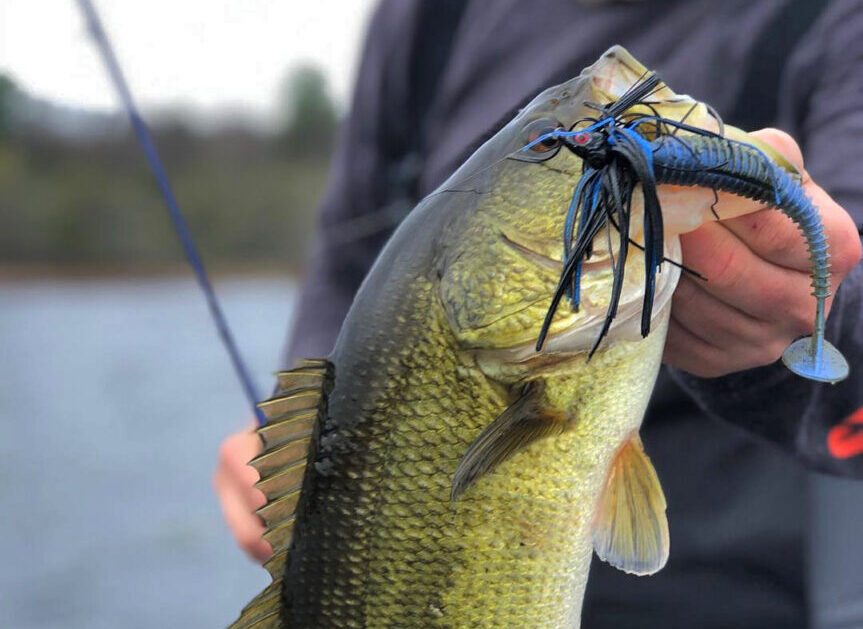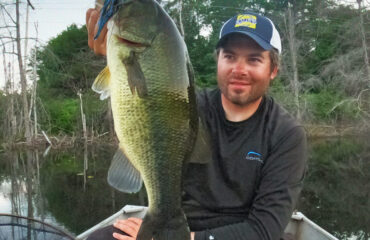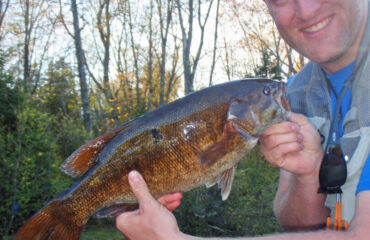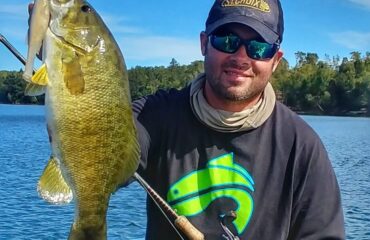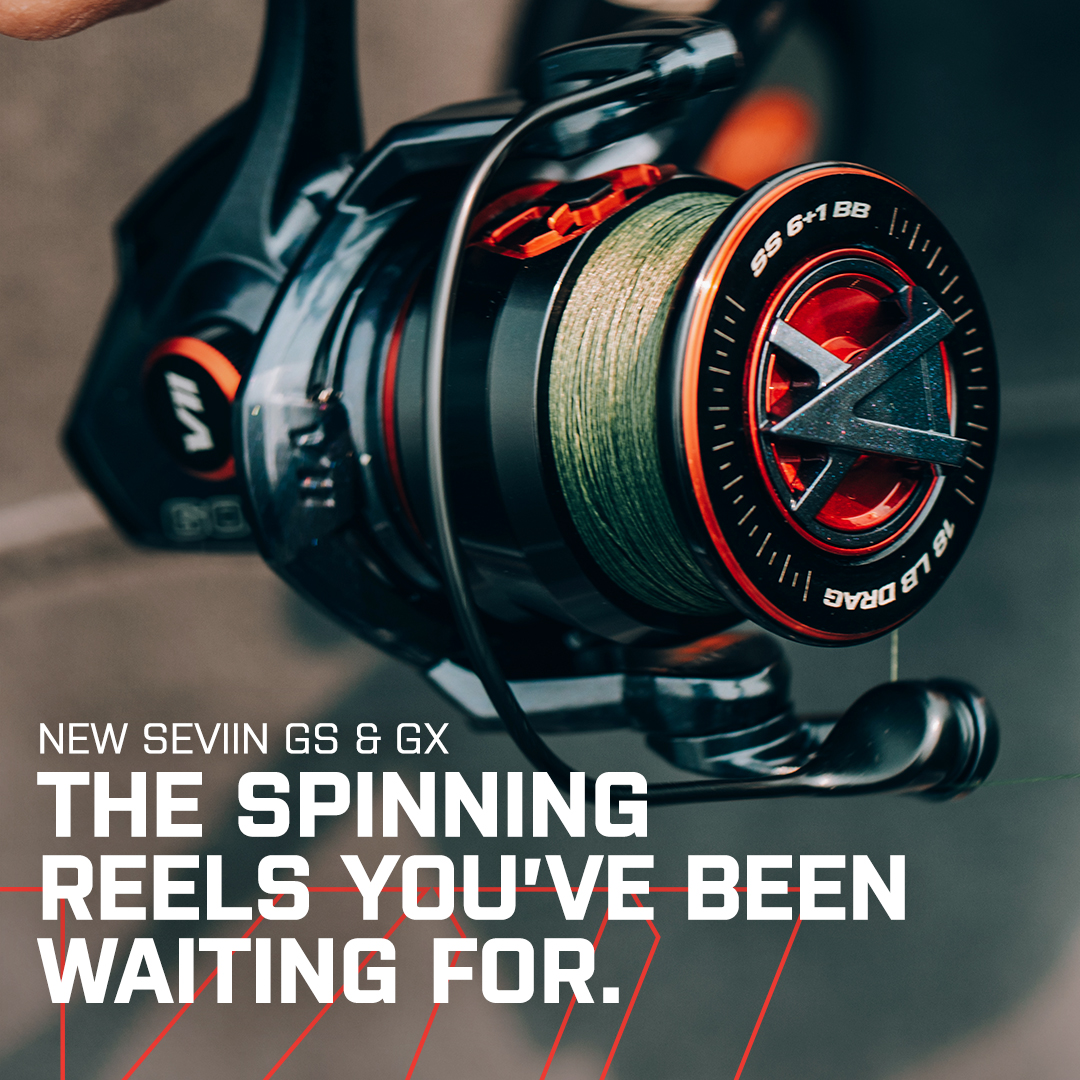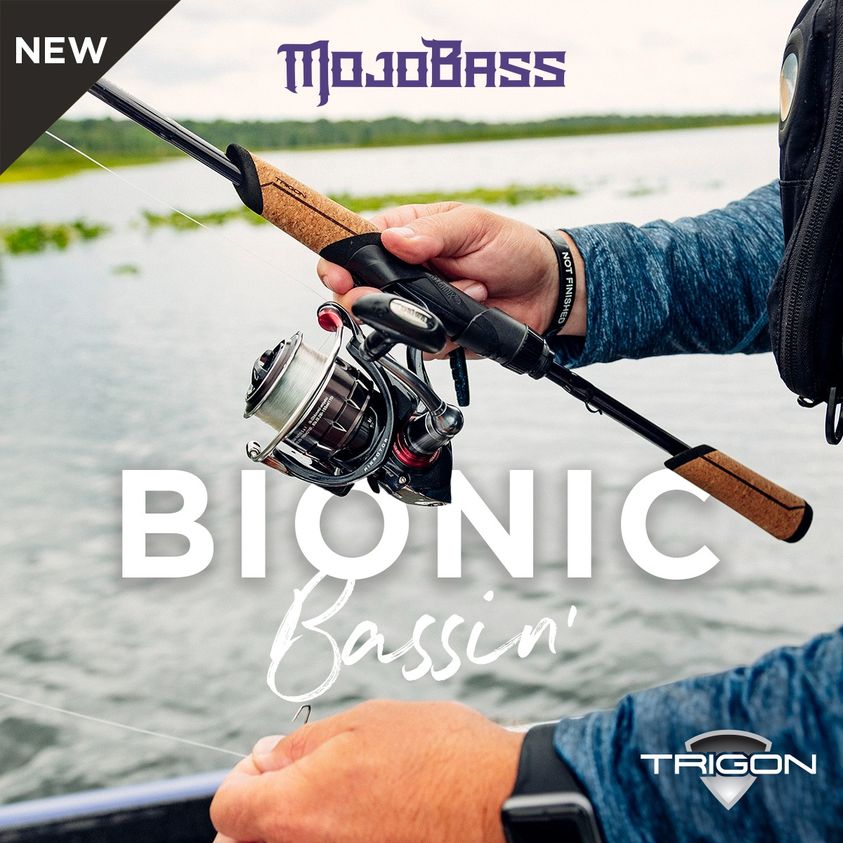Starting Lineup for Spring Largemouths
Depending on where in the Midwest you live, the arrival of spring varies. The season can begin as early as late February. In most regions, not until mid-March through early April. And in the far northern states, early to mid-May. It all depends on the arrival of warming weather and the progression of ice-melt. As the winter to spring transition takes place, largemouths are seeking the warmest waters they can find for feeding and pre-spawn preparations. Their movements from wintering areas to the shallows are rapid. Their feeding along the way is voracious.
Feeding is the major motivator for spring largemouths, where they are more opportunistic than usual. Metabolism and activity level increases as water temperature rises. Fish can be so locked into pre-spawn staging and feeding tendencies that strikes are suicidal and hook-sets could be automatic. Their feeding is among the most aggressive of the entire year.
When it comes to catching spring largemouths, aggressive and vibration-emitting horizontal presentations are lure choice guidelines to follow. In some other instances such as colder water and adverse conditions, slower and more relaxed works too. Lure selection for everything you should be doing during pre-spawn is going to be simple.
I present to you a few must-haves I live and die by that are tailored for spring pursuits across the upper Midwest.
Double Colorado Spinnerbait
Spinnerbaits shine in the shallows. They are my enablers for shoreline searching and quickly locating active fish.
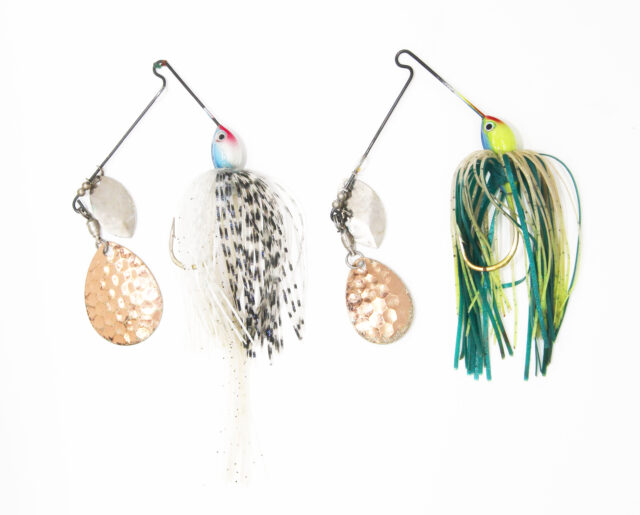
The fish finders I employ most frequently are my old collection of Terminator T2 spinnerbaits. These are 3/8-ounce models with a double-Colorado blade. This blade style is most effective for slow to moderate retrieves through shallow water and current areas, accommodating of slow-rolls and ripping cadences.
Color matters. Choices will be dictated by forage factors as well as habitat type. On shad-based fisheries and including ponds, you should want whites, silvers, chartreuse and sexy shad patterns. Meanwhile, dark contrasting patterns such as parrots, greens, and blacks are more common to my color selection. These excel in the dark bottomed bays, backwaters, and near-shore cover I fish the most. On most lakes, fish prefer one or the other, or both.
Storm WildEye Shiner
Subtler, compact horizontal presentations like swimming a 3” Storm WildEye Shiner scores giants for me on northern lakes and suburban ponds every spring. It is my all-time top producer for spring largemouth, catching numbers as well as some of the largest fish available.
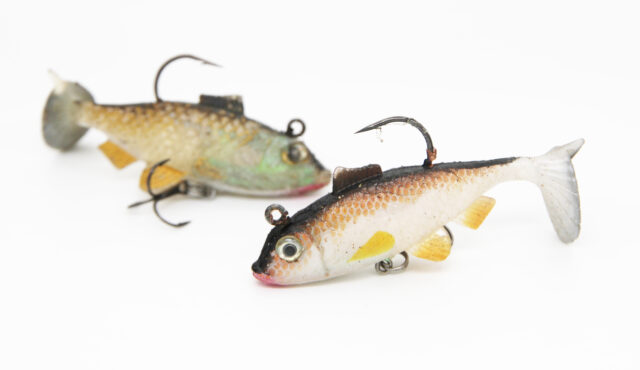
Fishing them isn’t any different than a lipless crankbait. With a steady medium-fast retrieve through the shallows, count on big bass finding it and striking mid retrieve. Where big largemouths lurk, you can usually get them to commit on these internally weighted, molded, soft compact plastics. Despite the bottom-side treble hook, don’t fear working it across the shallows through sporadic vegetation. It bangs well and can be ripped free from snags easily.
This fish catcher is simple, affordable, and very well detailed to represent baitfish and other prey fish. I recommend checking out the Storm WidEye series of swimbaits before committing to anything less durable and more expensive.
Downsized swimbaits represent a new, overlooked way of catching big largemouth. It’s also a potent presentation that has not yet been exploited by the masses to catching largemouth bass during the early spring season. They are an ideal early spring alternative when more seasonal power fishing techniques fail, and lipless crankbaits are prone to condition fish.
Paddletails
A jig and paddletail is a simple and irresistible fish-finder. Whether targeting largemouths near-shore and around cover, or off-shore and open water, they work on every lake. My paddletail of choice is a 3.8” Strike King Rage Swimmer, rigged with a ¼ oz. swimbait jig with hook exposed. In weedier and near-shore scenarios, I’ll fish these weedless with a ¼ oz. Freedom Tackle Corp. Hydra head with 3/0 EWG hook.
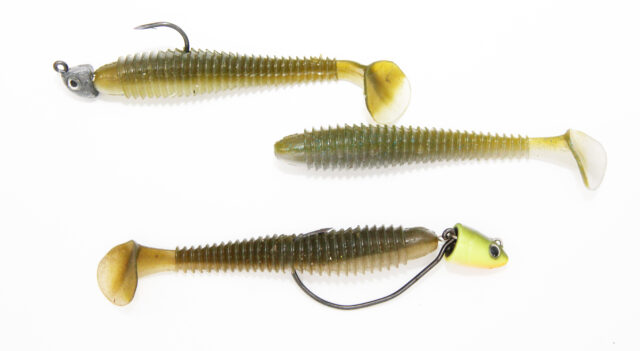
Bomb cast and let the wagging tail and vibration of the swimming head do the work for you. A medium, steady retrieve is best. The key is to keep the bait swimming along and in disguise as a fleeing minnow, assuring that fish never get a good look at it. My paddletail method is presented best with a 7ft. med. heavy action spinning setup such as a St. Croix Avid (AVS70MHF), and 7ft 3” medium-heavy extra-fast Legend Tournament Bass Power Finesse (LBTCMHXF). Faster powered reels with larger spool capacities are suggested for the quick retrieving needed.
Z-Man Chatterbaits
These baits require zero introduction. Ripping and cranking a variety of 3/8 oz. and ½ oz. Z-Man Chatterbaits through the shallows induces exhilarating strikes from early season largemouths. Bang ‘em over wood and rip through weeds, there is no wrong way to fish them.
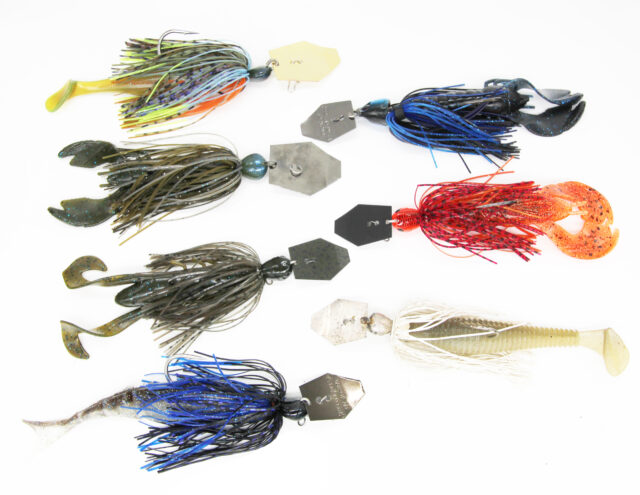
My bladed jig box comprises of Z-Man Chatterbaits in all sizes and models. Only where and when to throw a specific model becomes a question. Just like my color guideline for spinnerbaits, I try to follow the exact same with chatterbaits. Light colors for shad waterbodies, and dark contrasting colors all of the time otherwise. Black & blue, bluegill, and fire-craw are sleepers for each chatterbait model.
I most often fish with a Chatterbait Freedom, and Chatterbait Elite in ½ ounce models. The Freedom is great for anglers wanting to custom modify the bait with their own hook and skirt options. When I fish this model, I remove the weedless twisted hook attachment in favor of a 4/0 and 5/0 Trokar Flip’N hook to be fished exposed with trailer of choice. The skirts aren’t the most durable and are prone to warping, so it will accept other brand or custom-ties.
Last season, I frequently fished the new Chatterbait Elite. Available in 11 colors with strong hand-tied skirts and air-brushed heads, it comes with a high-quality 5/0 Gamakatsu hook that is much sharper than the Originals. Last but not least, a new molded keeper helps secure all trailers. I recommend this Chatterbait if what you seek is simplicity and durability for a great value of $7.99 retail.
Meanwhile, the popular Jackhammer series gets used a little more selectively and sparingly, featuring more bells and whistles and over 20 different colors. The Japanese design influences it comes with are worth its price tag.
Even though largemouths favor fast and compact, additional power and aggression could be necessary in some situations and in waters with reduced visibility. New from 2021, the Big Blade Chatterbait filled a need for additional thump and vibration.
For best trailer options, continue reading below.
Freedom Tackle Swim Jig
While rip and burn strategies wake up largemouths, more streamlined, horizontal straight-retrieve presentations in slower to moderate speeds could be preferred instead. Swim jigs such as Freedom Tackle’s FT Series swim jig are designed to be cast and retrieved high in the water column. Lighter in weight, with sleek head design to cut through the water, they can be swum through vegetation, wood, and other shallow junk.
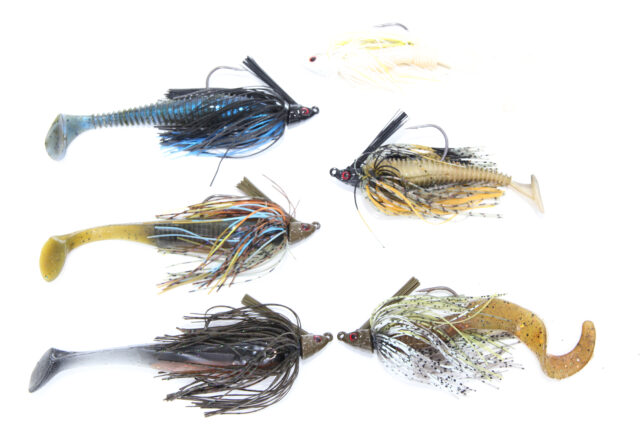
New from 2021, the FT Series jigs are available in ¼, 3/8, and ½ oz. sizes. 3/8 ounce is a perfect weight for depths of 5 feet and less.
Swim jigs are designed to be cast and retrieved through the water column. The swim jig’s combination of density, compact size, and high hooking percentage caters best to being a swimming presentation.
Swim jigs score huge numbers of fish because when perfectly rigged, with correct color combination paired with trailer, it can be utilized as a power and finesse presentation. Cone shaped heads will empower you to rip and power the jig through dense cover, with thin brush guard maintaining a weedless package.
My 3/8 oz. and ½ oz. swim jig with trailer concoctions each get fished with the Mojo Bass Dock Sniper (MJC70HF), and Legend Tournament Bass Dock Sniper (LBC70HF). Each reel is spooled with 20 lb. Cortland Masterbraid. The swim jig scores huge numbers of bass.
Assortment of Jig Trailers
Trailers are the business end of swim jigs and chatterbaits, and play a more important role than the jigs themselves. They enhance their versatility as they can be used to bulk a presentation to resemble larger prey, improve its streamlined swimming, help replicate the fins of fleeing preyfish, or to slow the fall rate.
Trailers are what ultimately trigger strikes, and choosing which to use tends to become more technical than jig selection itself. For simplicity, and with focus on horizontal moving baits, color coordinate the trailer to your jig and narrow it down to these three styles.
Z-Man Razor Shadz
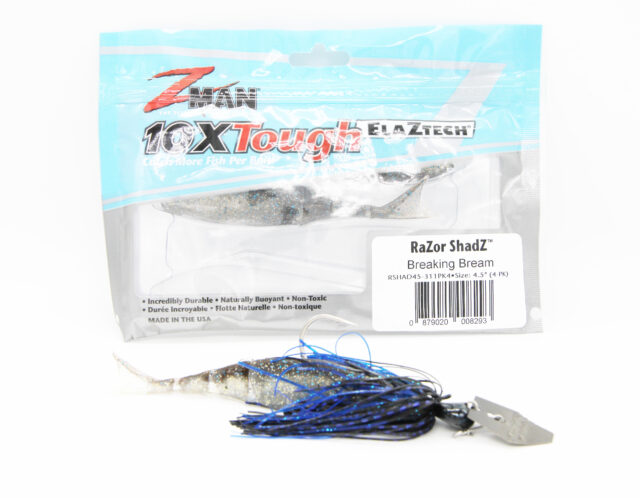
This baitfish imitation exclusively complements my chatterbaits. The Z-Man Razor Shadz’s segmented construction helps produce a lifelike swimming action created by the shimmy of a vibrating jig, with the whole package coming alive. Color patterns should be kept simple, consisting of bad shad, fire craw, and green pumpkin. Made from ElaZtech, you won’t find a more durable and lifelike jig trailer.
Bizz Baits Killer and Cutter Craws
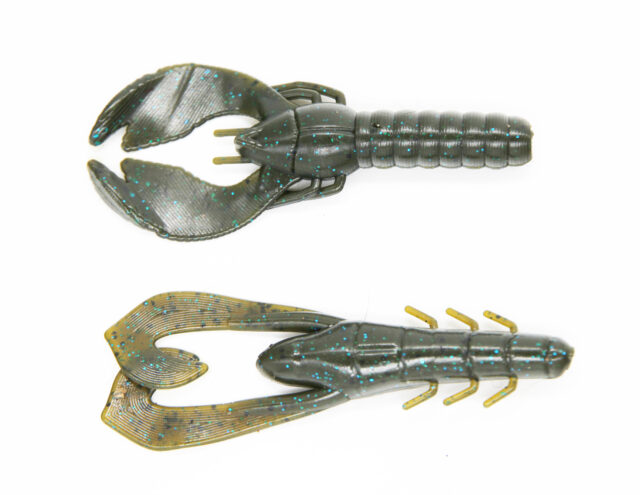
These two versatile jig trailers mimic both crayfish and fleeing baitfish. The long arms of the Bizz Baits Killer Craw and Cutter Craw kick and undulate underwater with minimal effort. Its compact size and streamlined shape makes it a great choice for the faster pace of chatterbaits and swim jigs. Color options run plenty, with contrasting darks favored.
Paddletails
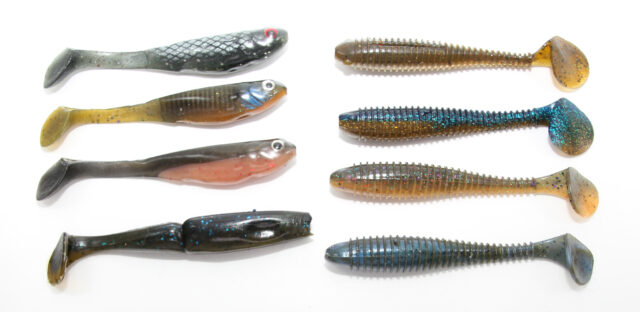
Often, the biggest largemouths will be triggered by a larger bulkier trailer. If favoring steady retrieves, I use larger 4-to-5-inch paddletails that generate a wide wobble and tail kick. I have caught my largest bass to date on baits with a paddletail trailer. For straight and steady retrieving, my assortment of tails consists of Bass Assassin Boss Shad, GrandeBass Kickback Shad, Gambler EZ Swimmer, and my custom-order air-brushed paddletails from Big Beast Baits. Some favorites are the 4.75 Grandebass Kickback Shad in ballistic gill and magic gill swirl, 4.8 Bass Assassin Boss Shiner in bluegill flash and sungill. The 5” Z-Man Diezel Minnow is durable and lively. Lastly, I am a proponent for commissioning custom bait makers. Larry Zepeda of Big Beast Baits in California produces the nicest airbrushed bluegill patterns and has the capability of several more custom requests.
Be mindful to adapt and adjust your swim jig package accordingly to fish feedback. Mix and match until you find a winner. With options and color choices abound, let the bass ultimately choose the right jig pattern, and trailer for you.
Strike King RedEye Shad and Bill Lewis Rat-L-Trap
Burning lipless crankbaits across shallow bays and parallel along shorelines entices aggressive, reactionary strikes. This is the best cold water early season strategy across my lakes of Wisconsin and Illinois. The original Rat-L-Trap and Strike King Red Eye Shad are top choices coming to mind. When the bite is hot, a lipless crank could be the only bait you’ll throw all afternoon.
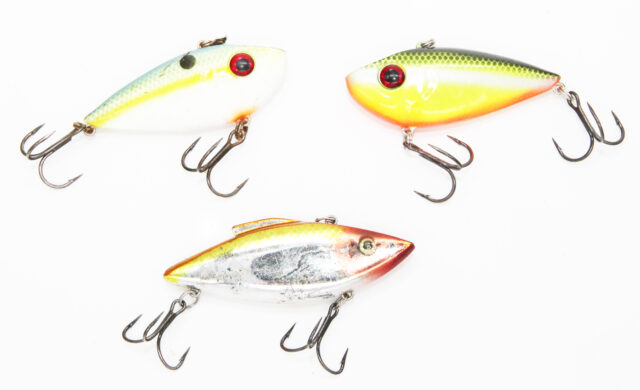
Available in several color patterns, I advise readers to follow my basic color guidelines. Early season largemouths are not very color selective. Fire craws, sexy shads, and chartreuse baitfish patterns are my go-to colors at every water.
Rod and reel are increasingly important for achieving best retrieve speeds and power. My lipless cranking gets best accomplished with my St. Croix Mojo Bass Glass Rip-N-Chatter (MGC72HM) paired with 7:3.1 high-speed Quantum PT reel. Line choice varies by cover type, but I settle for 20 lb. Cortland Masterbraid. If a leader is needed for fishing clear water, I’ll attach a 1-foot section of 12-pound Cortland Fluorocarbon. This same rod and reel setup also handles all of my chatterbait needs.
Mann’s Baby Minus-1
The original squarebill bait has been around now for several years. This bait gets frequently forgotten in between all of the other shallow runners available.
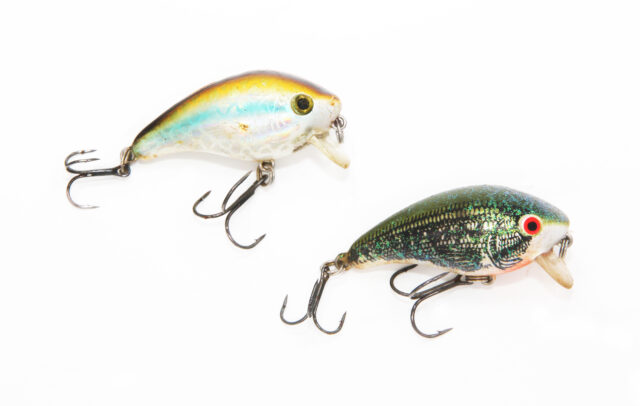
Designed with buoyancy, durability, and a lip angle to run extra-shallow over near-shore wood and emerging vegetation, this wide-wobbler can be twitched, jerked, and cranked.
Catch largemouths from inches deep water. Whether retrieved fast or slow, the tight wobbling and loud rattling persists. It reaches fish from areas that are impossible for all other crankbaits.
Bonus tip – These crankbaits are excellent in current and flowing waters for smallmouths.
Shadow Rap 10
Suspending jerkbaits are tools to trigger bites. We rely on them in spring during the cold-water period and cold fronts.
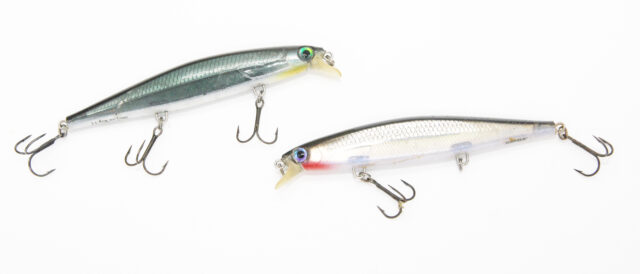
The Shadow Rap 10 works in most shallow water and near-shore situations. It fishes best as a pull bait, and doesn’t require much effort and snaps to produce a seductive action. This lure especially shines in early spring following ice-out where subtle pulls and long pauses are the triggering mechanisms from 40-degree water temperatures.
Favorite largemouth colors are carbon, moss back shiner, and green. Carbon gets fished with the most.
I strongly suggest fishing them with a MXF casting rod and a reel spooled with 10-pound fluoro. St. Croix Victory ‘The Jerk’ (VTC68MXF) and Legend Tournament Bass Jerkbait (LBTC68MXF) rods are both 6-foot 8-inch models that are a perfect match for the shadow rap.
Chatterbait Elite
Last season, I frequently fished the new Chatterbait Elite. Available in 11 colors with strong hand-tied skirts and air-brushed heads, it comes with a high-quality 5/0 Gamakatsu hook that is much sharper than the Originals. Last but not least, a new molded keeper helps secure all trailers. I recommend this Chatterbait if what you seek is simplicity and durability for a great value of $7.99 retail.
Getting the itch for spring largemouths? Specific lake locations that conduct and accumulate heat are instrumental in scoring early season bass fishing success. These hot spots and fish holding areas can be found at every lake and pond. Typically, what I look for are shallow muddy bays with exposure to the southern skies, and have inflows.
Look to the extreme shallows and depending upon the layout and configuration of your water, its northern shores. Importantly, pay close attention to wind direction. If blowing steady to other lake regions with shallow bays, it’s guaranteed to have warming water and hold the most fish.
Across all lakes and ponds, largemouth will go as shallow as nature allows. They’ll sun bathe and absorb all the newly created oxygen being produced by emergent plant life and other organisms. We’ve caught a lot of big largemouths within a foot from shore and in only a foot or less.
My starting lineup comes secondary to all of this.
The task of understanding bass behavior and spring locations allows us to identify presentations and refine them with proper techniques and specific lures like these recommendations.
Andrew Ragas splits time between the Chicago area and Wisconsin’s Northwoods. Based in Minocqua, WI, he specializes in trophy bass fishing and offers guided trips from May thru October. While big bass is the passion, he dabbles in multi-species as well. He may be visited online at www.northwoodsbass.com


